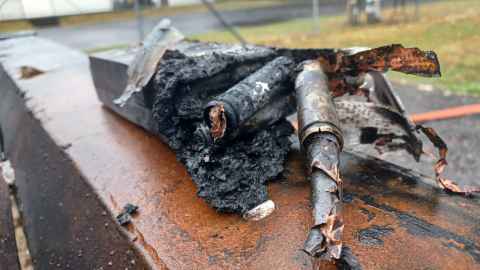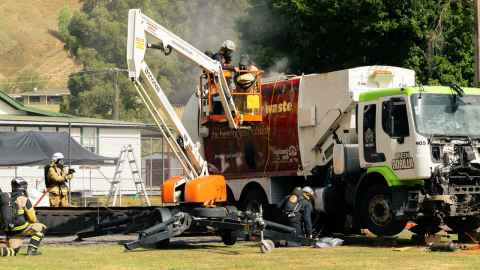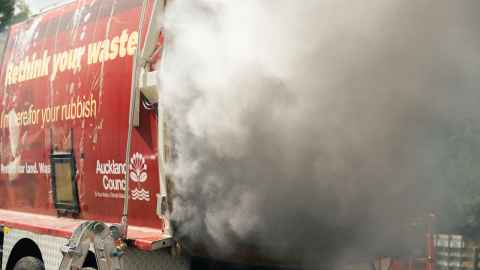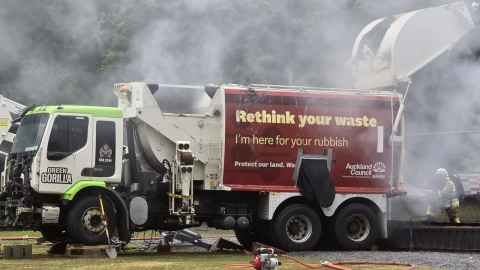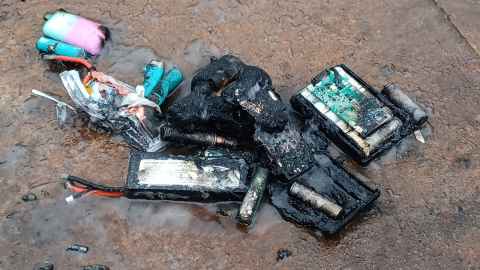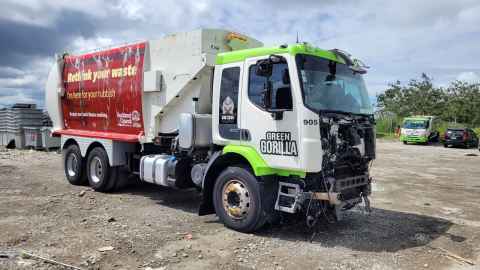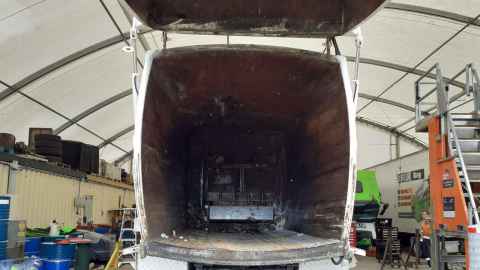Lithium-ion battery fires simulated in world-first trial
26 June 2025
Auckland Council and the University have collaborated on a world-first trial involving a rubbish truck and lithium-ion batteries.
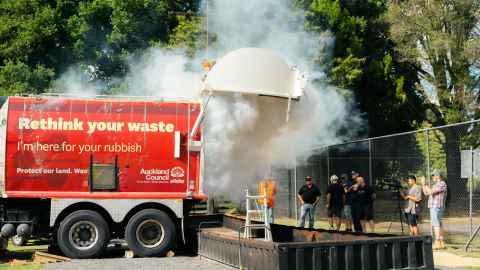
At a remote testing site in rural Taumarunui, a modified rubbish truck packed with household recyclables is set ablaze, ignited by a lithium-ion battery.
The dramatic scene isn’t an emergency. It’s a controlled trial led by Auckland Council, with support from University of Auckland researchers, to investigate the environmental and safety risks posed by lithium-ion battery fires.
The trial is the first of its kind in the world, simulating what happens when discarded batteries – found in everyday items like vapes, laptops, power tools and portable speakers – end up in rubbish trucks and ignite during collection.
"These batteries are everywhere," says Professor Saeid Baroutian, Executive Director of the University of Auckland's Circular Innovation Research Centre.
"Despite being banned from kerbside bins, they’re still showing up in household waste and starting fires, largely because people don’t know how to correctly recycle and dispose of electronic waste."
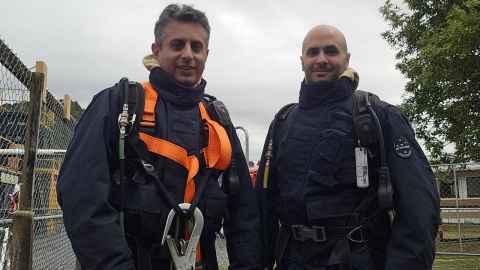
Baroutian led the environmental sampling and analysis throughout the trial, collecting air and firewater runoff samples to assess the toxins released during and after the burn.
His research found that toxic gases, including carbon monoxide and hydrogen fluoride, spiked well above safe air quality limits during the burn.
Even after the fire was extinguished, the lithium-ion battery continued to emit gases as part of its thermal runaway process. This phase is particularly hazardous, as gas buildup inside the truck can lead to vapour gas explosions or pose inhalation risks when the rear door is opened.
The surrounding air also remained laced with persistent organic pollutants, while the firewater runoff was contaminated with heavy metals and fluoride compounds.
"While the runoff stayed within trade waste standards, it would pose a significant risk if discharged untreated into waterways," says Baroutian.
PhD student Homam Jalali assisted with fieldwork and data analysis. He says both he and Baroutian received extensive safety preparation ahead of the trial, with all participants donning full firefighting gear.
The test burn took place at the Fire Rescue and First Response training facility in Kirikau, Taumarunui – one of only a few sites in Australasia licensed for large-scale fire simulations.
The idea was initiated by Auckland Council’s Lyndon Collie, a Senior Waste Operations and Collections Safety Specialist, after a surge in rubbish truck fires raised red flags.
"We didn’t have the data we needed about the gases inside the trucks or the environmental impacts of putting these fires out," says Collie.
"We realised our internal teams didn’t have the equipment needed to carry out the sampling, and that’s when Saeid came on board."
Baroutian’s findings will help guide future advice and procedures around the collection, transport and storage of batteries.
"We’re currently developing a strategy for Auckland Council on how to best deal with batteries, and we’re also working with WasteMINZ to compile national guidelines for safe battery collection and storage," says Collie.
He encourages Aucklanders to use the city’s e-waste collection points, listed on the Auckland Council website.
For Baroutian, the results send a clear warning.
"These fires pose serious risks, not just to people, but to our air, water and ecosystems. It's vital that we keep these batteries out of our bins and out of our trucks. It will prevent a lot of harm."
Media contact
Jogai Bhatt | Media adviser
M: 027 285 9464
E: jogai.bhatt@auckland.ac.nz
